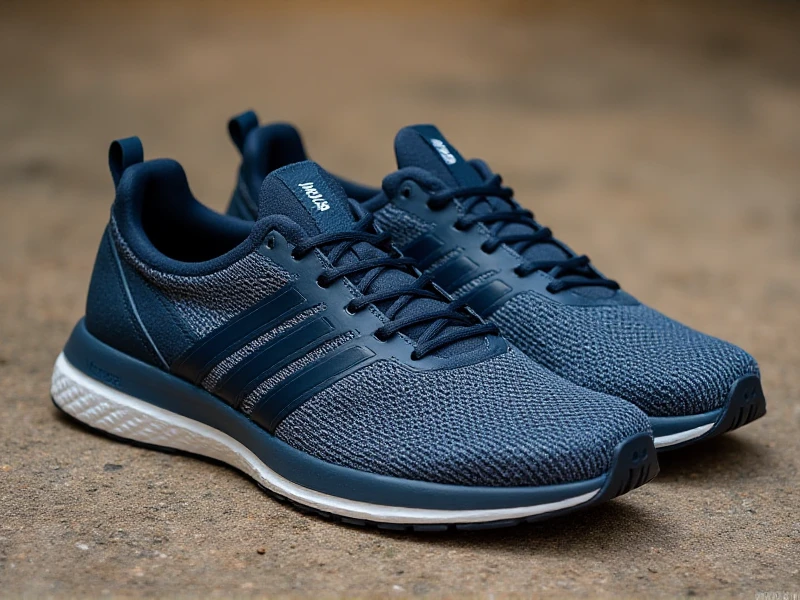
The Ultimate Guide to Finding Your Perfect Pair of Men's Running Shoes
2025-06-10
Choosing the right pair of men's running shoes isn't just about style; it's a critical investment in comfort, performance, and injury prevention. With countless options flooding the market, navigating the choices can feel overwhelming. This guide breaks down the key factors to consider, helping you confidently select the ideal men's running shoes for your unique needs and goals.
Why the Right Shoe Matters
Running is high-impact. Each stride subjects your feet, ankles, knees, and hips to significant stress. The right pair of men's running shoes acts as your shock absorber and stabilizer. They provide cushioning to soften impact, support to guide your foot's natural motion, and a snug, comfortable fit to prevent blisters and discomfort. Wearing improper footwear can lead to nagging aches like shin splints, plantar fasciitis, or knee pain, derailing your training.
Understanding Your Foot and Run
Before browsing styles, understand your unique running profile:
1. Foot Arch: Wet your foot and step on a piece of cardboard or paper.
Flat Feet (Low Arch): Entire footprint visible. Often benefit from Stability or Motion Control shoes to reduce overpronation (excessive inward roll).
Neutral Arch: Partial footprint, with a distinct curve inward. Typically suit Neutral Cushioning shoes offering balanced support and cushioning.
High Arch: Only a thin band connecting heel and forefoot visible. Usually require Neutral or Cushioned shoes with ample shock absorption, as high arches often lead to underpronation (insufficient inward roll).
2. Where You Run: Primarily hitting the pavement? Road running shoes offer specific cushioning and flexibility designed for hard surfaces. Trail running demands Trail shoes with aggressive outsoles for grip, added protection against rocks/roots, and often more durable uppers. For track or occasional speedwork, Racing flats or lightweight Performance trainers are options, though less cushioned for daily mileage.
3. Your Running Style (Gait): While a professional gait analysis is best, observing wear patterns on old shoes gives clues. Excessive inward wear suggests overpronation, outward wear suggests supination/underpronation. Centre wear is neutral. Match this to your arch needs.
4. Your Weight & Mileage: Heavier runners often need shoes with robust cushioning and durability. Those clocking high weekly mileage should prioritize ample cushioning and support to weather the repeated impact. Lower mileage runners might find lighter, less cushioned options sufficient.
Decoding Shoe Types
Men's running shoes generally fall into these main categories:
1. Cushioned (or Neutral): Maximum shock absorption, minimal stability features. Ideal for runners with neutral gaits or high arches who need protection against impact. Great for lightweight to medium-weight runners on paved surfaces.
2. Stability: Offer a blend of cushioning and moderate guidance features (like medial posts or dual-density midsoles) to gently correct moderate overpronation. Suitable for runners with low to medium arches or mild overpronation. Most versatile for road running.
3. Motion Control: Provide the highest level of stability and support for severe overpronators, often heavier runners. Feature firm medial posts and structured uppers. Less common now, as modern stability shoes are more advanced.
4. Minimalist/Barefoot: Mimic barefoot running, with minimal cushioning, zero drop (no heel elevation), and maximum flexibility. Require a significant transition period and may not suit all runners. Consult a professional before switching.
5. Trail: Built with deep, aggressive lugs for grip on mud or loose terrain, protective plates, durable/uprs, often water-resistant options. Some offer moderate cushioning similar to road shoes, while others are more rugged.
6. Racing/Race-Day: Ultra-lightweight, minimal cushioning and support for maximum speed over short distances. Not suitable for daily training due to lack of protection.
The Golden Rules of Fit
Finding the perfect fit is non-negotiable:
When: Shop later in the day when feet are naturally slightly swollen.
Socks: Wear your typical running socks.
Sizing: Always get measured professionally. Sizes vary wildly between brands. You likely need at least 1/2 to 1 full size larger than your casual shoe size to allow for foot expansion.
Width: Ensure adequate width. Pinching leads to blisters and black toenails.
Heel: Should be locked in place without slipping.
Toe Box: Must have ample room (about a thumb's width) in front of your longest toe. Your toes should wiggle freely.
The Test: Walk and jog around the store (if possible). Shoes should feel comfortable immediately – don't bank on "breaking them in."
Maximizing Your Investment
Rotate: Having two pairs of men's running shoes to rotate between runs extends their life and allows cushioning to fully rebound.
Track Mileage: Most shoes lose significant cushioning and support between 300-500 miles. Track your distance and replace them proactively.
Purpose: Use specific shoes for their intended purpose – road shoes for roads, trail shoes for trails.
Conclusion
Investing time in selecting the perfect men's running shoes pays huge dividends in your running journey. By understanding your foot type, running style, terrain, and the essential elements of fit, you can confidently navigate the options. Forget the hype; focus on the fundamentals of cushioning, support, and fit tailored to your needs. Visit a specialty running store for expert advice and gait analysis alongside your own research. The right pair will feel like a natural extension of your foot, empowering you to run stronger, longer, and more comfortably.
CATEGORYS: